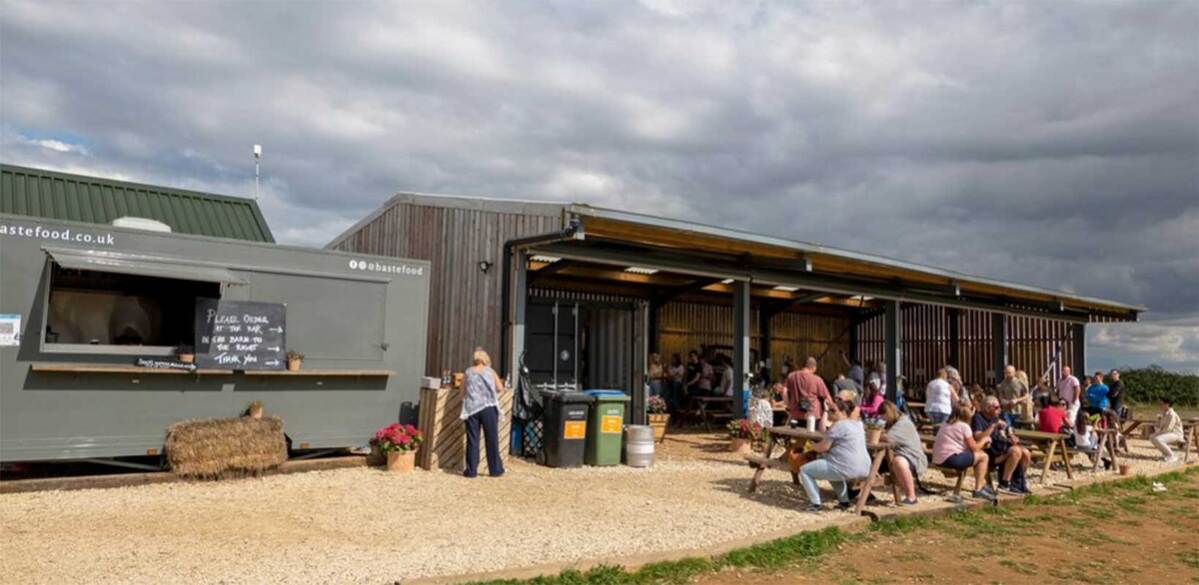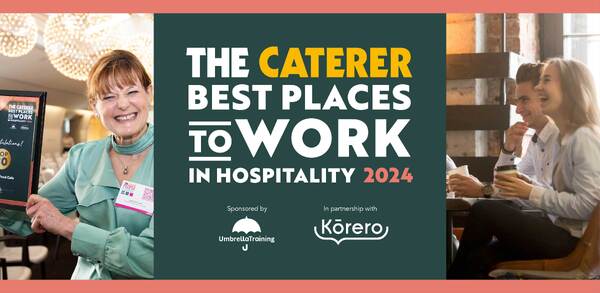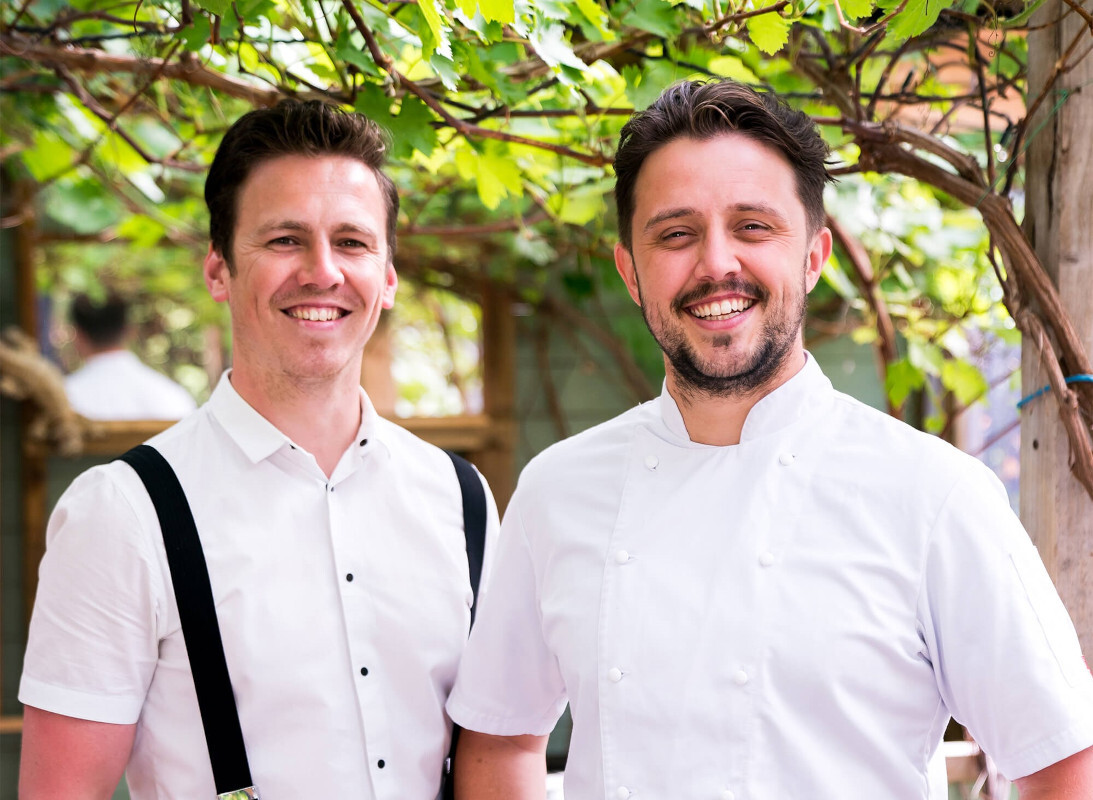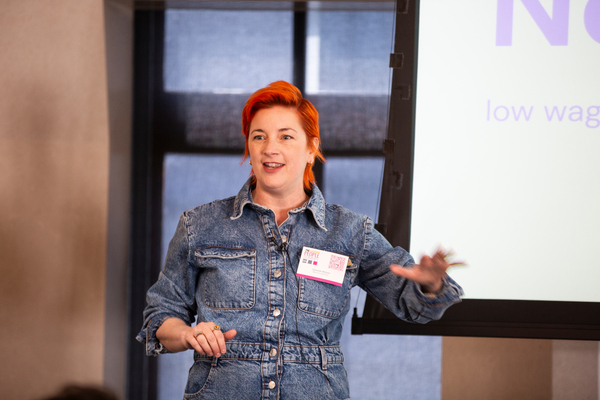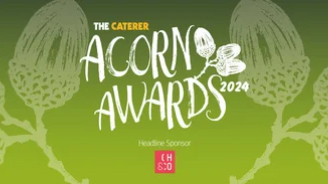Sour power
Choucroute is a special feature of the menu at new London bistro La Trouvaille. Fiona Sims talks to head chef Sebastien Gagnebé about the Alsatian speciality.
Sebastien Gagnebé may not actually be from Alsace, but that doesn't stop him making good choucroute garnie. Maybe it's because he was once a choucroutier (yes, there is such a kitchen position) at Paris brasserie Terminus Nord, or because he can turn his hand to just about any regional French bistro dish.
The head chef of new London French restaurant La Trouvaille has even got a wad of reviews to prove it. Times food critic Jonathan Meades was the first through the door after it opened last May, and the restaurant hasn't looked back. "Business is great," beams owner Thierry Bouteloup, who used to manage London's La Poule au Pot.
Choucroute garnie is deemed worthy of special attention, say the boys at La Trouvaille. So they decided to make a feature of it. For one whole week of every month, every day is choucroute day in the cosy downstairs dining room. The rest of the month is taken up by other French bistro classics - there's Bourguignon week (which starts with, say, a terrine and finishes with chocolate mousse); Paysanne week (rillettes des sardines, Toulouse sausages, poire au vin); and Savoyarde week (saucisson, raclette and potatoes, biscuit de Savoie et coulis). All for £20 a head for lunch, or £25 for dinner, including a half-bottle of wine.
So what is choucroute garnie exactly? Well, we're talking fermented cabbage - that's the choucroute bit (or sauerkraut, as it is known across the border in Germany) - while the garnie is sausages and different cuts of pork. It's a brasserie classic with its roots in Alsace and neighbouring districts.
The habit of mixing different cuts of meat in a single dish was spotted in Alsace by French writer Michel Montaigne way back in the 16th century. "The fermented cabbage is meant for keeping and eating throughout the year," explains Gagnebé, who once read that the Chinese used to munch it while constructing the Great Wall. But it is in Alsace, Germany and Austria that choucroute - or sauerkraut (literally, sour cabbage) - achieves classic status.
On an autumn weekend in Alsace, bus-loads of tourists swamp the region's chocolate-box villages to sample the new beer and wine - accompanied by choucroute and sausages. The first, crunchy, slightly acid choucroute traditionally appears in Strasbourg on 25 September, and each village has its own way of celebrating it.
Gagnebé explains how to ferment cabbage the traditional way. "You must use the white, Quintal cabbage. First you must shred it, and then layer it with a sprinkling of salt [about 45g for every 10g of shredded cabbage] in a wooden barrel that has been lined with vine leaves. Keep the cabbage weighed down with a stone that is a similar weight to the cabbage. When it's stopped foaming, it's ready. This takes about a month."
Of course, these days nobody bothers to make their own, preferring to buy the cabbage ready-fermented in vast tubs or jars. In Alsace, you buy it from a charcuterie, which also sells the sausages and pork joints to go with it.
But not all choucroute is alike. "There's a big difference between producers," says Gagnebé, who favours Wagner, which he gets from London-based suppliers Finefrance.
Gagnebé prepares the dish the way he was taught at Terminus Nord. In terms of kitchen hierarchy, the choucroutier is pretty much at the bottom of the rung. "Because it's such a simple dish. But that's what makes it so easy for service. Once you've done all the prep, you're just talking about a couple of simmering pots," he says.
But there are a few rules to observe. Apparently, there's a debate between the regions of Lorraine, Alsace and Champagne about whether you cook the choucroute for 1hour 20 minutes or 1 hour 10 minutes. "For one, it's not cooked enough, for another it's overcooked," says Gagneb‚, who cooks it for 1 hour 15 minutes. "Hey, if it tastes good, it's done."
There's also some debate about whether you wash the cabbage before cooking. Some say wash it in water, others say milk, a few say not to wash it at all. Gagneb‚ is in the last camp. "It doesn't smell the same if you wash it," he says.
First, Gagnebé likes to soften sliced onion in duck fat, rather than the traditional pork fat - well, he is from P‚rigord - before adding crushed juniper berries, whole cloves and bay leaves. "Some people put diced apple in at this stage to make it taste sweeter, but I'm not a big fan of sweet and sour," he says.
Chopped garlic is added just before the cabbage goes in, followed by chicken stock. If it boils dry, add a little more stock. At the end of cooking Gagnebé likes to add a slug of kirsch, which is in keeping with tradition, as would be any other eau-de-vie. Wine is also used - ideally a Gewurztraminer or Riesling (too sweet for Gagnebé) - or even beer for a more bitter finish.
Meanwhile, your presoaked ham hock should be simmering away - Gagnebé gets his from Borough Market's Peter Gott of Sillfield Farm, along with the rest of his charcuterie - in a stock made with carrot, onion, bay leaves, parsley - "whatever I've got" - for one to one-and-a-half hours, until tender. Along the way, Gagnebé adds a slab of wild boar pancetta to the pot, then whole Ratte potatoes, and finally the sausages.
At least the sausages are one thing that all agree on. There must be three different types: a Frankfurter, a Strasbourger and a chunky, smoked Toulouse-style (he uses Montb‚liard from Repertoire). The sausages hit the pot about 10 minutes before the end of cooking (or 20 minutes for the Montb‚liard) at a gentle simmer. To serve, arrange the meat artfully on top of the cabbage and serve with mustard - preferably Savora, says Gagnebé.
And to wash it down? Ideally the same wine that you used in the dish, says Bouteloup. But he hasn't got any Alsace Gewurztraminer or Riesling on his list, so recommends a Montravel sec from Domaine de Gouyat (£14.50), supplied by Caves de Pyrene, which supplies most of the list.
Contemporary choucroute
Sometimes Gagnebé adds celeriac in with the cabbage, using the stock from poaching the meat to cook the root. "Bit more sophisticated," he says.
But other modern versions use anything from cured beef to oysters, and even frogs' legs - as interpreted by Heston Blumenthal at the Fat Duck, in Bray, Berkshire. "And I use Savoy cabbage sometimes, not Quintal," says Blumenthal, "steamed, then saut‚d with salt, white wine vinegar and onions." If he's using the ready-fermented kind, he adds his own flavourings, such as star anise. He also adds wine, rather than kirsch, and it's always Riesling.
One day, famous German winemaker Dr Ernst Loosen came to lunch and chose the choucroute - which just happened to be made with a Loosen Riesling. "He thought it was hilarious." Blumenthal eschews the Frankfurter in favour of saucisson and pork belly. And in true Blumenthal tradition, it's all cooked at a much lower temperature than everybody else's.
Contacts
Finefrance 020 7622 1020
Peter Gott of Sillfield Farm 01539 567609
Repertoire 020 7923 7000
Caves de Pyrene 01483 538820


